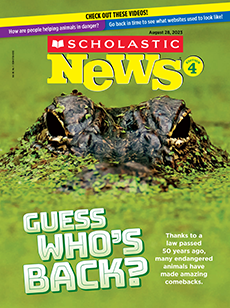1. What are three main sources of food waste described in the article?
Three main sources of food waste described in the article are farmers, stores, and people like us. The article explains that farmers often throw away bruised or oddly shaped fruits and veggies since people are less likely to buy them. Many stores throw away damaged boxes of food, and people buy more food than they need then toss what they don’t eat.
(RI.4.2 Main Idea and Key Details)
2. How does the author support the claim that food waste is bad for the environment?
The author supports the claim that food waste is bad for the environment by giving two examples. One is that when food rots in landfills, it releases methane, which traps some of the sun’s heat in Earth’s atmosphere and warms the planet. Another is that when we throw away food, we are also wasting the resources that were used to grow or transport that food, like water and fuel.
(RI.4.8 Reasons and Evidence)
3. How does the composting program at Prairie Winds Elementary School work?
In the composting program at Prairie Winds Elementary School, students sort their trash at lunch, making sure to set aside fruits and vegetables without sauces for composting. These scraps are placed in a bin with soil, strips of newspaper, and worms. The worms eat the scraps, and the worm poop becomes fertilizer that is used in the school garden.
(RI.4.3 Explaining Events)
